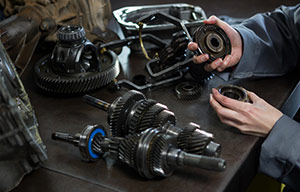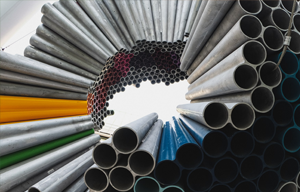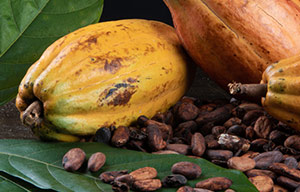1. Undang-Undang.
Undang-undang dan Regulasi Perlindungan Konsumen.
Consumer Protection Laws and Regulations Brazil 2023,
Konstitusi Federal (Federal Constitution) menyatakan bahwa perlindungan konsumen adalah hak fundamental dan harus dijamin oleh Negara dan diatur oleh undang-undang (Pasal 5, XXXII, FC).
Undang-undang yang paling penting untuk perlindungan konsumen adalah Consumer Protection Code (Law No. 8.078/1990), yang menetapkan semua aturan umum utama, seperti mendefinisikan siapa yang dianggap sebagai konsumen dan pemasok, serta hak-hak konsumen dan kewajiban pemasok. Selain itu, perlindungan konsumen diatur oleh undang-undang dan pedoman lain di Brasil
Setiap entitas, baik individu atau badan hukum mempunyai kewajiban untuk mematuhi undang-undang perlindungan konsumen dalam kegiatan produksi, perakitan, penciptaan, konstruksi, transformasi, impor, ekspor, dan distribusi.
Lihat informasi selengkapnya disini.
2. Regulasi.
2.1 Ketentuan Impor Kendaraan.
Ketentuan Umum Impor.
Impor mobil baru ke Brasil adalah kegiatan terbatas, memerlukan lisensi impor dan sertifikat yang dikeluarkan oleh lembaga pemerintah lingkungan dan lalu lintas.
Pembatasan impor dan larangan impor:
- Pembatasan impor mobil vintage (diproduksi lebih dari 30 tahun yang lalu),
- Larangan impor komponen mobil bekas
Uji Keselamatan.
Setiap kendaraan yang memasuki pasar Brasil harus melakukan uji keselamatan sesuai dengan regulasi SENATRAN Ordinace No.990/2022, yang mensyaratkan bahwa suku cadang dan sistem kendaraan harus memenuhi standar CONTRAN Brasil
Lembaga terkait dalam proses importasi
- Departamento de Operações de Comércio Exterior (DECEX)
- Sistema Integrado de Comércio Exterior (SISCOMEX)
- Instituto Brasileiro do Meio Ambiente e dos Recursos Naturais Renováveis (IBAMA)
- Departamento Nacional de Trânsito (DENATRAN)
- Secretaria da Receita Federal do Brasil (RFB)
Tergantung pada jenis kendaraan yang akan diimpor, dan mungkin juga perlu berinteraksi dengan lembaga lainnya seperti:
- Untuk mobil antipeluru memerlukan otorisasi dari "Comando do Exército"
- Untuk ambulans akan membutuhkan otorisasi dari “Agência Nacional de Vigilância Sanitária”.
- Untuk traktor akan membutuhkan otorisasi dari “Ministério da Agricultura, Pecuária e Abastecimento”.
Persyaratan Homologasi Otomotif Baru Brasil
Ordinance No. 190/09 yang dikeluarkan oleh Brazilian National Department of Transit (DENATRAN) menetapkan prosedur homologasi baru yang diperlukan untuk pendaftaran dan penjualan kendaraan bermotor di Brasil. Reulasi ini menetapkan prosedur pemberian kode untuk merek / model / versi kendaraan untuk Registro Nacional de Veículos Automotores - RENAVAM (Daftar Kendaraan Nasional).
- Jenis Kendaraan: Agricultural Tractor, Bus, Car, Heavy Truck, Light Truck, Motorcycle, Trailer.
- Kategori Sertifikasi: Type Approval and Certification.
2.2 Pengujian dan Sertifikasi.
Penguijan dan Inspeksi.
Pengujian Wajib dan Sertifikasi Produk Wajib
Mengenai produk yang diatur, umumnya diperlukan bahwa entitas yang terlibat dalam pengujian produk dan sertifikasi wajib diakreditasi oleh INMETRO. Pengujian harus dilakukan di Brasil, kecuali kemampuan yang diperlukan tidak ada di negara tersebut.
Pengujian Non-Wajib dan Sertifikasi Produk
Tidak ada mandat hukum untuk menguji ulang produk yang tidak diatur yang telah disetujui di negara asalnya. Setiap sertifikasi yang mungkin diperlukan di sektor yang tidak diatur adalah masalah kontrak yang harus diputuskan antara pembeli dan penjual.
Sertifikasi Produk (Komponen) Otomotif.
Daftar produk Aksesori Otomotif (Automotive Accessories) yang disertifikasi.
Automotive components – Exhibits I to VII
- Suspension bumpers
- Piston rings
- Electric fuel pumps for Otto cycle engines
- Plain bearings
- Horns and similar equipment
- Automotive vehicle lights
- Pin and locking rings(retention)
- Light aluminum alloy pistons
Automotive components – Exhibit VIII
- Lead-acid batteries for automotive vehicles
Automotive components – Exhibit IX
- Tie rod ends
- Tie rod assemblies
- Tie rod tubes
- Inner tie rods for automotive road vehicles
- Automotive components – Exhibit
- Brake lining for automotive road vehicles intended for use on public roadways, classified as category M, N or O
Automotive components – Exhibit X
- Brake pads for automotive road vehicles intended for use on public roadways, classified as category M, N or O.
Daftar produk Komonen Otomotif dan Transportasi (Automotive Components and Transportation) yang disertifikasi.
- Vehicular safety inspection – road vehicles
- Vehicular safety inspection on automotive road vehicles with natural vehicular gas systems – RTQ no. 37
- Inspection of vehicles and equipment designated for transport of hazardous materials
- Road vehicle manufacturers, assemblers and/or refurbishers, and vehicular equipment manufacturers
- Fifth wheels for use in road vehicles intended for the transportation of hazardous cargo and materials
- Automotive wheels
- Services for the adaptation of container fastening devices
- Services for the adaptation of auxiliary vehicle axles
- Automotive components for motorcycles, scooters, mopeds, tricycles and quadricycles
- Vehicle axles
- Use, repair and reconditioning of internal coating of road haulage tanks intended for the transportation of hazardous materials
- New tires
- Installation and removal services for underground fuel supply systems – “SASC”
- Natural vehicular gas (NGV) installation service in refueling stations
- Midsized bulk containers (IBC) used in the transportation of hazardous materials
- Inspection services of transportable containers for liquefied petroleum gas (LPG) performed by LPG distributing companies
- Manufacturer ratings of mechanical attachment devices (hitch parts)
- King pins for road vehicles intended for transportation of hazardous cargo and materials
- Vehicular unloading lifts
- Vehicular unloading lifts for vehicles with road characteristics
- Tire reconditioning
- Pumps and centrifugal motor-pumps
- Automotive vehicle hydraulic brake liquidsContainer carrying vehicles and container fastening devices
- Vehicular safety inspection – road vehicles
- Vehicular safety inspection on automotive road vehicles with natural vehicular gas systems – RTQ no. 37
- Inspection of vehicles and equipment designated for transport of hazardous materials
- Road vehicle manufacturers, assemblers and/or refurbishers, and vehicular equipment manufacturers
- Fifth wheels for use in road vehicles intended for the transportation of hazardous cargo and materials
- Automotive wheels
- Services for the adaptation of container fastening devices
- Services for the adaptation of auxiliary vehicle axles
- Automotive components for motorcycles, scooters, mopeds, tricycles and quadricycles
- Container carrying vehicles and container fastening devices
2.3 Regulasi Mutu Teknis dan Persyaratan Penilaian Kesesuaian.
Regulasi Ordinance No. 145/2022, menyetujui Regulasi Mutu Teknis dan persyaratan Penilaian Kesesuaian untuk komponen otomotif dan berlaku untuk komponen otomotif kendaraan jalan yang diperuntukkan bagi aftermarket, sebagai berikut:
- suspension shock absorbers;
- electric fuel pump for Otto cycle engines;
- horn;
- light aluminum alloy pistons, pins and locking rings (retention);
- piston rings;
- bearings;
- lamps;
- lead-acid battery;
- friction materials for brakes, and
- tie rods, tie rods, tie rods and axial leads.
Regulasi Inmetro (Ordinance No. 145/2022) mencabut regulasi beberapa regulasi sebelumnya.
Lihat informasi selengkapnya disini.
Penilaian Kesesuaian.
Penilaian kesesuaian mencakup semua kegiatan yang diperlukan untuk menunjukkan kepatuhan terhadap persyaratan yang ditentukan terkait dengan peraturan teknis atau standar sukarela. Di Brasil, sistem penilaian kesesuaian mengikuti pedoman ISO. Penilaian kesesuaian meliputi laboratorium pengujian dan kalibrasi, lembaga sertifikasi produk, lembaga akreditasi, unit inspeksi dan verifikasi, sistem mutu, dan lain-lain.
Penilaian kesesuaian dapat bersifat sukarela atau wajib, dilakukan melalui instrumen hukum untuk melindungi konsumen pada isu-isu yang berkaitan dengan kehidupan, kesehatan dan lingkungan. Pada umumnya, pengujian harus dilakukan di dalam negeri (Brasil), kecuali kemampuan yang diperlukan tidak ada di Brasil.
The National Institute of Metrology, Quality and Technology (INMETRO) adalah lembaga regulator Brasil yang mengevaluasi persyaratan kepatuhan produk otomotif yang diproduksi di atau diekspor ke Brasil.
Skema sertifikasi INMETRO dilaksanakan untuk menetapkan standar kualitas dan keamanan minimum untuk komponen yang komprehensif. Kendaraan dan komponen otomotif wajib sertifikasi INMETRO.
Sertifikasi INMETRO diperlukan untuk memastikan bahwa kendaraan bermotor dan komponen otomotif dapat dijual di Brasil. Selain itu sertifikasi INMERTO berlaku secara legal di negara Amerika Selatan sebagai pasar otomotif terbesar keempat di dunia.
Langkah sertifikasi INMETRO:
- Aplikasi untuk inisiai sertifikasi INMETRO
- Penelaahan dokumen
- Penilaian kinerjan dan lapangan (On-site and performance assessment)
- Sertifikasi INMETRO dan registrasi produk
- (regular certificate maintenance)
2.4 Regulasi Komponen Sepeda Motor.
INMERTO Ordinance No. 71/2022 on Automotive Components for Motor Vehicle, Safety performance for motorcycles
Komponen otomotif untuk kendaraan bermotor, kinerja keselamatan untuk sepeda motor ditetapkan melalui INMERTO Ordinance No. 71/2022, yang berlaku untuk sepeda motor, skuter, moped, speda motor roda tiga dan roda empat yang mulai diberlakukan pada 3 Maret 2022. Produsen dan importir komponen sepeda motor mempunyai kewajiban untuk menyesuaikan dengan kententuan ini.
Prosedur.
- Pengajuan Aplikasi.
- Audit pabrik berdasarkan dokumen ISO 9001 dan Quality Managemen System (QMS).
- Persiapan dan pengujian sample.
- Audit Perwakilan/Reprensentative Hukum.
- Penyerahan dan Peninjauan Dokumen Teknis
- Penerbitan Sertifikat.
- Registrasi INMERT
2.5 Penilaian Kesesuaian Komponen Otomotif Volume Impor dan Produksi Rendah
INMERTO mengeluarkan Ordinance No. 110 New Low Volume regulation for vehicle parts, yang diterapkan untuk komponen otomotif berikut:
- Automotive Components;
- Automotive Components for Motorcycles, Scooters, Mopeds, Tricycles and Quadricycles;
- Automotive Wheels; and
- Automotive Safety Glass.
Volume rendah dipahami sebagai komponen otomotif pengganti komponen (suku cadang) pabrik. Komponen otomotif volume rendah hanya dapat dipasarkan, langsung ke konsumen akhir, oleh produsen mobil nasional atau asing, atau melalui perwakilan atau importir resmi mereka, di dealer resmi masing-masing, dan dapat dapat diimpor ke Brasil melalui mekanisme pernyataan esesuaian pemasok. Namun demikian, mereka memerlukan tanda INMETRO.
Regulasi ini menetapkan jumlah meksimum per model/jenis komponen per tahun dan jumlah maksimum per komponen per tahun, sebagai berikut:
|
Automotive Component |
Maximum number per component model per year |
Maximum quantity per component per year |
|
Shock absorber (passenger vehicles) |
300 |
7500 |
|
Shock absorber (heavy vehicles) |
300 |
7500 |
|
electric fuel pump |
100 |
2500 |
|
Horn |
100 |
2500 |
|
pistons |
300 |
7500 |
|
Pins (pistons) |
300 |
7500 |
|
Drums |
100 |
2500 |
|
Lock rings (pistons) |
300 |
7500 |
|
piston rings |
300 |
7500 |
|
automotive wheels |
300 |
7500 |
|
bearings |
300 |
7500 |
|
automotive lamps |
300 |
7500 |
|
steering terminals |
300 |
7500 |
|
steering bars |
300 |
7500 |
|
link bars |
300 |
7500 |
|
axial terminals |
300 |
7500 |
|
Friction materials for brakes – pads |
300 |
7500 |
|
Friction materials for brakes – linings |
300 |
7500 |
|
Automotive Road Vehicle Tempered Safety Glass |
100 |
2500 |
|
Motor Vehicle Windshield Laminated Safety Glass |
100 |
2500 |
|
Automotive Component (exclusively for Motorcycles, Scooters, Mopeds, Tricycles and Quads) |
Maximum number per component model per year |
Maximum quantity per component per year |
|
Pinion |
300 |
2000 |
|
Crown |
300 |
2000 |
|
transmission current |
300 |
2000 |
|
Exhaust |
300 |
2000 |
2.6 Regulasi Kendaraan Bermotor dan Komponen Otomotif Lainnya.
Type Approval and Certification.
- ANTT Ordinance No. 216/2022 Define the Types, Species and Bodywork of Vehicles Accepted for Registration in the RNTRC.
- Contran Resolution No. 528/2015 Prohibition from Registering and Licensing Motor Vehicles with a Right-hand Drive.
- Contran Resolution No. 749/2018 Hybrid, Plug-in Hybrid and Electric Vehicles Specific Requirements.
- Contran Resolution No. 750/2018 Requirements for Electric and Hybrid Propelled Mopeds, Motorcycles, Scooters, Tricycles and Quadricycles.
- Contran Resolution No. 812/2020 Safety Requirements of Container Transport Vehicles.
- Contran Resolution No. 819/2021 Transport of Children Younger than Ten Years who have not reached 1.45m in an Appropriate Restraint Device.
- Contran Resolution No. 885/2021 Safety Requirements and Testing of Door Locks, Hinges and Components of Motor Vehicles.
- Contran Resolution No. 910/2022 Establishes Occupant Protection and Fuel System Integrity Requirements in the Event of Vehicle Impact.
- Contran Resolution No. 914/2022 Regulates the Use of Semi-trailers by Motorcycles and Scooters.
- Contran Resolution No. 915/2022 Provides for Procedures for Evaluating Vehicle Braking Systems.
- Contran Resolution No. 916/2022 Provides for the Granting of a Brand/Model/Version Code.
- Contran Resolution No. 939/2022 Requirements for Passenger Transport Vehicles of the Minibus Type.
- Contran Resolution No. 943/2022 Minimum Safety Requirements of Motorcycle Taxis and Motorcycle Deliveries.
- Contran Resolution No. 952/2022 Technical Specifications for Rear Guards on Goods Vehicles.
- Contran Resolution No. 954/2022 Requires the Use of Stability Control Systems in Vehicles.
- Contran Resolution No. 959/2022 Safety Requirements for Passenger Transport Vehicles.
- Contran Resolution No. 996/2023 Mopeds, Electric Bicycles and Self-propelled Individual Mobility Equipment on Public Roads.
- Decree No. 11.014/2022 Approves the Regulation on the National Register of Tractors and Agricultural Machinery.
- Decree No. 62.127 National Transport Code Regulations (Extracts).
- Inmetro Ordinance No. 34/2021 Consolidated Requirements for Motor Vehicle Safety Glass.
- Inmetro Ordinance No. 59/2022 Approves the Conformity Requirements for Vehicles for Passenger Transport - Consolidated.
- Inmetro Ordinance No. 246/2021 Consolidated Requirements for Child Restraint Systems.
- Inmetro Ordinance No. 368/2021 Consolidated Requirements for Container Securing Adaptions.
- Inmetro Ordinance No. 383/2021 Consolidated Requirements for Vehicles for Collective Passenger Transport.
- Inmetro Ordinance No. 494/2021 Requirements for Container Transport Vehicles and Container Securing Devices - Consolidated.
- Inmetro Ordinance No. 495/2021 Conformity Requirements for Auxiliary Vehicle Axle Conversions - Consolidated.
- Inmetro Ordinance No. 496/2021 Technical Regulation on Quality and the Conformity Assessment Requirements for Vehicle Axles - Consolidated.
- Inmetro Ordinance No. 501/2021 Approves the Conformity Assessment Requirements for Automotive Wheels - Consolidated.
- Normative Instruction No. 19/2021 Lays Down the Transitional Procedure for Production Conformity.
- Normative Instruction No. 20/2020 PROCONVE P8 Phase for Heavy Road Vehicles.
- Normative Instruction No. 21/2022 Approval Requirements of the On-board Diagnostic System OBD-M1 and L Category Vehicles.
- Ordinance No. 21/2016 Classification for Vehicles with Jeep Body and Diesel Engine.
- Ordinance No. 169/2023 Requirements for Light Passenger and Commercial Vehicles - Consolidated.
- Ordinance No. 190/2009 Vehicle Code Granting Procedure for the National Vehicle Register.
- Ordinance No. 990/2022 Establishes the Procedure for Approving Vehicles and Vehicle Equipment for Registration.
- Ordinance No. 1554/2022 Requirements for Vehicle Safety Labelling Program.
- Public Consultation No. 4/2022 Proposal to Revise the Registration of Gross Vehicle Weight (GVW) and Maximum Towing Capacity (MTC).
- Regulatory Instruction No. 17/2002 Motorcycle and Moped Emission Test Procedures and Approvals.
- Resolution No. 623/83 Inspection of Vehicles.
Braking
- Contran Resolution No. 463/73 Safety Requirements - Vehicles Manufactured Nationally.
- Contran Resolution No. 915/2022 Provides for Procedures for Evaluating Vehicle Braking Systems.
Emissions and Fuel Consumption
- Conama Resolution No. 8/93 Air Pollution Control Program - Motor Vehicles.
- Conama Resolution No. 15/95 New Rating of Motor Vehicles for Gas Vehicular Emission Control, Particulate and Evaporative Matter.
- Conama Resolution No. 16/95 Maximum Limits of Pollutant Emissions for New, National and Imported Heavy Duty Vehicles.
- Conama Resolution No. 282/2001 Requirements for Catalytic Converters.
- Conama Resolution No. 297/2002 Motorcycle and Moped Vehicle Emissions.
- Conama Resolution No. 403/2008 Air Pollution Control Program - Motor Vehicles.
- Conama Resolution No. 432/2011 Emissions from Mopeds, Motorcycles and Similar New Vehicles.
- Conama Resolution No. 490/2018 Proconve P8 Phase Requirements - Heavy Vehicle Emissions.
- Conama Resolution No. 492/2018 Proconve L7 and L8 Phase Requirement for Vehicle Exhaust Emission Control.
- Conama Resolution No. 493/2019 PROMOT M5 Phase Emissions Control of Motorcycles.
- Contran Resolution No. 958/2022 Regulates Exhaust Gas and Particulate Emission Limits of Motor Vehicles.
- Law No. 8.723/93 Reduction of Pollutant Emissions by Automotive Vehicles.
- Normative Instruction No. 3/2021 Assessing Light Passenger Vehicles and Light Commercial Vehicles by Real Driving Emissions.
- Normative Instruction No. 11/2014 Autonomy Test for Obtaining the LCVM for Light Passenger and Commercial Vehicles.
- Normative Instruction No. 19/2021 Lays Down the Transitional Procedure for Production Conformity.
- Normative Instruction No. 20/2020 PROCONVE P8 Phase for Heavy Road Vehicles.
- Normative Instruction No. 21/2022 Approval Requirements of the On-board Diagnostic System OBD-M1 and L Category Vehicles.
- Normative Instruction No. 22/2020 Determination of Emissions of Non-methane Organic Gases.
- Normative Instruction No. 23/2020 Specifications and Criteria for Verifying and Certifying the On-board Diagnostic System OBDBr-3.
- Normative Instruction No. 23/2021 Extends the Validity of Licenses to Use a Vehicle or Engine Configuration.
- Ordinance No. 33/2021 Requirements for Replacement Catalytic Converters - Consolidated.
- Regulatory Instruction No. 4/2010 On-board Self-diagnostic Systems (OBD).
- Regulatory Instruction No. 5/2013 OBDBr-D Systems in Light Diesel Vehicles.
- Regulatory Instruction No. 17/2002 Motorcycle and Moped Emission Test Procedures and Approvals.
- Regulatory Instruction No. 17/2013 Exhaust Emissions and Noise Test Specifications for Motorcycles.
- Regulatory Instruction No. 28/2002 Procedures for Carrying out Emissions Tests.
- Regulatory Instruction No. 54/2004 Emissions Test Reports.
- Regulatory Instruction No. 55/2004 ESC and ELR Test Procedures.
- Resolution No. 1/87 Emissions from Motor Vehicles.
- Resolution No. 6/2005 Fuel Specifications - Petrol.
- Resolution No. 7/93 Vehicle Emissions - Inspection and Maintenance Programme.
- Resolution No. 14/95 Vehicle Emissions - Programme.
- Resolution No. 18/86 Vehicle Emissions - Programme.
- Resolution No. 23/2010 Fuel Specifications - Ethanol.
- Resolution No. 227/97 Vehicle Emissions - Inspection and Maintenance Programme.
- Resolution No. 291/2001 Conversion of Vehicle to Run on Gas.
- Resolution No. 315/2002 Control of Vehicle Emissions.
- Resolution No. 342/2003 Motorcycle and Moped Vehicle Emissions.
- Resolution No. 354/2004 On-board Diagnostics Systems.
- Resolution No. 415/2009 Vehicle Emissions - Programme.
Noise
- Conama Resolution No. 1/93 Noise Limits for Motor Vehicles.
- Conama Resolution No. 2/93 Noise Limits for Motorcycles, Scooters, Mopeds and Similar Vehicles.
- Conama Resolution No. 8/93 Air Pollution Control Program - Motor Vehicles.
- Conama Resolution No. 272/2000 Maximum Noise Limits for Motor Vehicles.
- Conama Resolution No. 490/2018 Proconve P8 Phase Requirements - Heavy Vehicle Emissions.
- Contran Resolution No. 764/2018 Sound Pressure Level of Horns or Similar Equipment.
- Contran Resolution No. 958/2022 Regulates Exhaust Gas and Particulate Emission Limits of Motor Vehicles.
- Regulatory Instruction No. 17/2013 Exhaust Emissions and Noise Test Specifications for Motorcycles.
Steering, Wheels and Tyres
- Contran Resolution No. 888/2021 Requirements for the Spray-suppression Systems.
- Contran Resolution No. 913/2022 Regulates the Use of Tires on Vehicles.
- Contran Resolution No. 954/2022 Requires the Use of Stability Control Systems in Vehicles.
- Contran Resolution No. 963/2022 Establishes the Minimum Safety Requirements for Special Wheels of Vehicles.
- Denatran Ordinance No. 268/2022 Approves Goods and Passenger Vehicles and Vehicle Combinations with Respective Weight and Dimensions.
- Inmetro Ordinance No. 495/2021 Conformity Requirements for Auxiliary Vehicle Axle Conversions - Consolidated.
- Inmetro Ordinance No. 496/2021 Technical Regulation on Quality and the Conformity Assessment Requirements for Vehicle Axles - Consolidated.
- Inmetro Ordinance No. 501/2021 Approves the Conformity Assessment Requirements for Automotive Wheels - Consolidated.
- Resolution No. 533/78 Replacement Wheels.
- Resolution No. 545/78 Special Wheel - Safety Standards.
3. Standar Emisi Kendaraan.
3.1 Standar Emisi Kendaraan Ringan.
Standar Emisi kendaraan ringan ditetapkan melalui standar PROCONVE L-7, yang mengatur batas emisi polutan konvensional. Standar ini diatur melalui lembaga pemerintah: The National Council for the Environment (Conselho Nacional do Meio Ambiente), atau “CONAMA”, bagian dari Ministry of Environment (Ministério do Meio Ambiente).
Penerapan Standar.
Kendaraan penumpang dan komersial ringan baru dengan berat maksimum ≤ 3.856 kilogram (kg) dan berat lari maksimum ≤ 2.720 kg.
- Kendaraan penumpang ringan harus dirancang untuk mengangkut penumpang dan memiliki tidak lebih dari delapan kursi selain kursi pengemudi.
- Kendaraan komersial ringan yang dirancang untuk: (i) pengangkutan muatan lebih besar dari 1.000 kg atau (ii) angkutan penumpang, dengan lebih dari delapan kursi selain kursi pengemudi, atau (iii) karakteristik khusus untuk penggunaan off-road.
Standar Teknis.
Tabel di bawah ini menunjukkan standar emisi untuk Passenger Vehicles (PV) ringan dan Light Commercial Vehicles (LCV) sebagaimana didefinisikan dalam Proconve L-4 hingga L-7.
|
Emissions Standards for Light Passenger Vehicles |
||||||||
|
Tier |
Date |
Idle CO |
CO |
THC(1) |
NMHC |
NOx |
HCO(2) |
PM |
|
% vol |
g/km |
|||||||
|
Proconve L-4 |
1-Jan-07 |
0.5 |
2 |
0.3 |
0.16 |
0.25(4)/0.60(5) |
0.03 |
0.05(3) |
|
Proconve L-5 |
1-Jan-09 |
0.5 |
2 |
0.3 |
0.05 |
0.12(4)/0.25(5) |
0.02 |
0.05(3) |
|
Proconve L-6 |
1-Jan-13 |
0.2 |
1.3 |
0.3 |
0.05 |
0.08 |
0.02 |
0.025(3) |
|
|
NMOG + NOx(5) |
Aldehydes(2)(6) |
|
|||||
|
Proconve L-7 |
1-Jan-22 |
– |
1 |
– |
0.08 |
0.015 |
0.006(3)(4) |
|
|
Notes: |
||||||||
|
Emissions Standards for Light Commercial Vehicles |
|||||||||
|
Tier |
Date |
Category |
Idle CO |
CO |
THC(1) |
NMHC |
NOx |
HCO(2) |
PM |
|
% vol |
g/km |
||||||||
|
Proconve L-4 |
1-Jan-07 |
≤1700kg |
0.5 |
2 |
0.3 |
0.16 |
0.25/0.6 |
0.03 |
0.08(3) |
|
>1700kg |
0.5 |
2.7 |
0.5 |
0.2 |
0.43/1 |
0.06 |
0.1(3) |
||
|
Proconve L-5 |
1-Jan-09 |
≤1700kg |
0.5 |
2 |
0.3 |
0.05 |
0.12/0.25 |
0.02 |
0.05(3) |
|
>1700kg |
0.5 |
2.7 |
0.5 |
0.06 |
0.25/0.43 |
0.04 |
0.06(3) |
||
|
Proconve L-6 |
1-Jan-13 |
≤1700kg |
0.2 |
1.3 |
0.3 |
0.05 |
0.08 |
0.02 |
0.03(3) |
|
>1700kg |
0.2 |
2 |
0.5 |
0.06 |
0.25/0.35 |
0.03 |
0.04(3) |
||
|
|
NMOG + NOx(5) |
Aldehydes(2)(6) |
|
||||||
|
Proconve L-7 |
1-Jan-22 |
≤1700kg |
– |
1 |
– |
0.14(3)/0.32(4) |
0.015 |
0.006(3)/0.02(4) |
|
|
>1700kg |
– |
1 |
– |
0.14(3)/0.32(4) |
0.015 |
0.006(3)/0.02(4) |
|||
|
Notes: |
|||||||||
L-7 standards.
Standar PROCONVE L-7, yang ditunjukkan pada tabel berikut, mengikuti pendekatan regulasi yang serupa dengan fase sebelumnya dari PROCONVE L-Standards. Batas emisi knalpot yang berbeda ditentukan untuk kendaraan penumpang dan komersial. Untuk kendaraan yang dilengkapi dengan mesin spark-ignition (SI), dan kendaraan dengan mesin diesel, batas terpisah ditetapkan untuk polutan tertentu.
|
PROCONVE L-7 emissions limits for light-duty vehicles |
|||||||
|
Vehicle category |
NMOG + NOx |
PM(1) |
CO |
Aldehydes(3) |
NH3(2) |
Evaporative(5) |
Refueling(5) |
|
mg/km |
ppm |
g/test |
mg/L supplied |
||||
|
Passenger vehicles |
80 |
6 |
1,000 |
15 |
Declare |
0.5 |
50 |
|
Light commercial vehicles |
140(3) |
6(3) |
|||||
|
320(4) |
20(4) |
||||||
|
Notes: |
|||||||
Selain memperketat batas polutan yang diatur dalam fase sebelumnya, L7 dan L8 memperkenalkan beberapa perubahan lain pada kerangka kerja PROCONVE, yang meliputi:
- Batas terpisah pada aldehida dibuat untuk kendaraan yang dilengkapi dengan mesin SI.
- Batas gabungan NMOG + NOx (gas organik non-metana) diperkenalkan untuk menggantikan NMHC dan NOx
- L-7 memperkenalkan batas PM untuk LDV yang dilengkapi dengan mesin injeksi langsung SI, yang sebelumnya tidak diatur.
- Pengenalan batas emisi pengisian bahan bakar 50 miligram (mg) per liter (L) untuk kendaraan berbahan bakar bensin atau etanol
- Batas emisi penguapan dikurangi dari 1,5 g per tes menjadi 0,5 g dan sekarang diuji pada prosedur tes diurnal 48 jam dibandingkan dengan tes 2 jam yang diperlukan di bawah L-6. Batas tersebut hanya berlaku untuk kendaraan berbahan bakar etanol atau bensin dan akan mulai bertahap pada tahun 2023, mengikuti garis waktu yang disajikan pada tabel berikut.
|
Implementation timeline for 50 mg/L refueling emissions limit |
|
|
Year |
Compliance target |
|
2023 |
20% total sales per manufacturer |
|
2024 |
60% total sales per manufacturer |
|
2025 and onward |
All vehicle models subject to refueling limit |
Pengujian.
Siklus mengemudi yang digunakan untuk pengujian sertifikasi kendaraan dalam fase L-7 dan L-8 diuraikan dalam standar Brasil NBR 6.601: 2012. Bahan bakar yang digunakan untuk pengujian harus mengikuti spesifikasi yang ditetapkan oleh National Agency of Petroleum, Natural Gas, and Biofuels (Agência Nacional do Petróleo, Gás Natural e Biocombustíveis) sebagaimana ditetapkan dalam Article 7 of Law no. 8,723.
Informasi selengkapnya dapat dilihat disini.
3.2 Standar Emisi Kendaraan Berat.
Standar PROCONVE 8 (P-8), berdasarkan Euro VI, diadopsi pada tahun 2018. Standar P-8 berlaku untuk persetujuan jenis kendaraan baru pada Januari 2022, semua penjualan dan pendaftaran baru pada Januari 2023; untuk semua kendaraan berat (HDV) on-road baru dengan mesin diesel atau gas.
Standar ini menetapkan Batas emisi polutan konvensional yang diatur oleh Conselho Nacional do Meio Ambiente Brasil (National Council for the Environment), atau "CONAMA", bagian dari Ministério do Meio Ambiente (Ministry of Environment). CONAMA terdiri dari lembaga negara, pemerintah kota, perwakilan industri, organisasi lingkungan, dan mitra masyarakat sipil. CONAMA bertanggung jawab untuk menilai dan mengusulkan pedoman kebijakan lingkungan, termasuk standar lingkungan seperti batas emisi maksimum kendaraan.
Penerapan.
Standar P-8 akan berlaku untuk semua kendaraan penumpang dan barang on-road baru yang dilengkapi dengan mesin compression-ignition atau spark-ignition dan beratnya setidaknya 3.856 kg, yang diproduksi dan diimpor di dalam negeri.
Standar Teknis.
PROCONVE P-8 menggantikan siklus ESC dan ETC dengan WHSC dan WHTC, menambahkan uji emisi di luar siklus menggunakan metodologi WNTE, dan menyertakan persyaratan kesesuaian dalam layanan (ISC).
Tabel berikut menunjukkan batas emisi maksimum standar P-8. Batas ini adalah setara dengan Euro VI untuk semua jenis bahan bakar, polutan, dan siklus pengujian. Batas emisi selama WHSC hanya berlaku untuk mesin compression-ignition. Total hidrokarbon Batas emisi (THC) berlaku untuk mesin compression-ignition, sedangkan batas hidrokarbon nonmetana (NMHC) dan metana (CH4) berlaku untuk mesin dengan spark-ignition.
|
Table PROCONVE 8 emission standards for heavy-duty vehicles |
||||||||||
|
PROCONVE Standarda |
Euro Equivalent |
Test Cycle |
CO |
THCb |
NOx |
PM |
NMHC |
CH4 |
NH3g |
PN |
|
(g/kWh) |
ppm |
(#/kWh) |
||||||||
|
ETC |
4.0 |
– |
2.0 |
0.03 |
0.55 |
1.1 |
25 |
– |
||
|
P-8 |
Euro VI |
WHSCe |
1.5 |
0.13 |
0.4 |
0.01 |
– |
– |
10 |
8 x 1011 |
|
WHTCe |
4.0 |
0.16 |
0.46 |
0.01 |
– |
– |
10 |
6 x 1011 |
||
|
WHTCf |
4.0 |
– |
0.46 |
0.01 |
0.16 |
0.5 |
10 |
– |
||
|
OCE (WNTE)e |
2.0 |
0.22 |
0.60 |
0.016 |
– |
– |
– |
– |
||
|
ISC |
6.0 |
0.24 |
0.69 |
– |
0.24 |
0.75 |
– |
– |
||
Pengujian.
PROCONVE P-8 menggunakan bahan bakar referensi yang sama dengan PROCONVE P-7 untuk menguji emisi. Bahan bakar referensi dapat berubah jika Agência Nacional de Petróleo, Gás Natural e Biocombustíveis (ANP), Brazilian National Agency for Petroleum, Natural Gas and Biofuels menerbitkan spesifikasi baru yang mencakup campuran biodiesel.
PROCONVE P-8 menggantikan siklus ESC dan ETC dengan WHTC dan WHSC, masing-masing, membuat perubahan ke siklus yang lebih representatif untuk uji emisi. P-8 juga mencakup uji off-cycle World Harmonized not-to-Exceed (WNTE), sesuai dengan United Nations Economic Commission for Europe (UNECE) Regulation R49.06.
Persyaratan sistem diagnostik on-board (OBD) P-8 lebih maju. Informasinya dapat dilihat dalam Lampiran 91, 9B, 9C, 11, dan 14 UNECE Regulation R49.06 dan Annex XIII of EC 582/2011, karena prosedur nasional yang setara belum ditentukan. Ketentuan ini mencakup nilai ambang batas yang lebih ketat setelah Euro VI.
Lihat informasi selengkapnya disini.
3.3 Standar Liannya.
Contoh Standar Brake dan Clustch System.
- ABNT NBR ISO 6310:2016 Road Vehicles - Brake linings - Compressive strain test methods. This Standard specifies a method for test and measurement of the compressive displacement of brake linings or brake pad assemblies due to loading and temperature. It also provides a test method to assess lining thermal swell and growth.
- ABNT NBR ISO 6311:2006 Road vehicles - Brake linings - Internal shear strength of lining material - Test procedure.
- ABNT NBR 12683:2005 Road vehicles - Brake system - Disc brake - Verification of leakage, sealing functionability, mechanincal strenght, delivered gases of piston coating and corrosion.
- ABNT NBR 9495:2001 Road vehicles - Verification of hydraulic brake booster.
- ABNT NBR 14600:2000 Road vehicles - Clutch lining and brake lining - Determination of soluble constituints in acetone.
- ABNT NBR 14601:2000 Road vehicles - Clutch lining and brake lining - Determination of ash content, loss on ignation and moisture content.
- ABNT NBR 5544:1998 Clutch facing and brake lining - Specific gravity
- ABNT NBR 7813:1998 Clutch and brake friction's material - Friction assessment screening test - FAST test.
Contoh standar untuk Kendaraan Listrik (Electric Vehicle).
- ABNT NBR IEC 61980-1:2022 Electric vehicle wireless power transfer (wpt) systems Part 1: General requirements. This Part of ABNT NBR IEC 61980 applies to the supply device for charging electric road vehicles using wireless methods at standard supply voltages per IEC 60038 up to 1 000 V AC and up to 1 500 V DC.
- ABNT NBR IEC 61851-23:2020 Electric vehicle conductive charging system Part 23: DC electric vehicle charging station. This Part of ABNT NBR IEC 61851, together with ABNT NBR IEC 61851-1:2013, gives the requirements for d.c. electric vehicle (EV) charging stations, herein also referred to as “DC charger”, for conductive connection to the vehicle, with an a.c. or d.c. input voltage up to 1 000 V a.c. and up to 1 500 V d.c. according to IEC 60038.
- ABNT NBR IEC 61851-24:2021Electric vehicle conductive charging system Part 24: Digital communication between a d.c. EV charging station and an electric vehicle for control of d.c. charginge. This Part of ABNT NBR IEC 61851, together with ABNT NBR IEC 61851-23, applies to digital communication between a d.c. EV charging station and an electric road vehicle (EV) for control of d.c. charging, with an a.c. or d.c. input voltage up to 1 000 V a.c. and up to 1 500 V d.c. for the conductive charging procedure.
- ABNT NBR IEC 61851-1:2021 Eletric vehicle conductive charging system Part 1: General requirements. This Part of ABNT NBR IEC 61851 applies to EV supply system for charging electric road vehicles, with a rated supply voltage up to 1 000 V AC or up to 1 500 V DC. and a rated output voltage up to 1 000 V AC. or up to 1 500 V DC.
- ABNT NBR IEC 61851-21-1:2021 Electric vehicle conductive charging system
Part 21-1: Electric vehicle on-board charger EMC requirements for conductive connection to an AC/DC supply. This Part of ABNT NBR IEC 61851, together with ABNT NBR IEC 61851-1, gives requirements for conductive connection of an electric vehicle (EV) to an AC or DC supply. It applies only to on-board charging units either tested on the complete vehicle or tested on the charging system component level (ESA – electronic sub assembly).
Contoh standar Steering System.
- ABNT NBR 14040-7:2023 Safety vehicular inspection — Light and heavy vehicles
Part 7: Steering system. This Part of ABNT NBR 14040 establishes the requirements to the inspection of steering system of light and heavy vehicles. This Part of ABNT NBR 14040 uses the instrumental and sensory inspection method. - ABNT NBR 16130:2012 Road vehicles — Tie rod ends, drag links, tie rods and axial bars assemblies — Requirements and test methods applied to vehicles categories M and N and categories G and O (when applicable). This Standard establishes the performance standards and durability for side bar and steering ends for road vehicles, their trailers and combined, agricultural and industrial applications (according to ABNT NBR 6067 and ABNT NBR 13776) for responsibility purposes of project
- ABNT NBR 16131:2012 Road vehicles — Tie rod ends, tie rods, drag links, axial bar assemblies — Terminology. This Standard has for objective to propose standardized terminologies for the integral parts of the steering systems, as well as their transmission components and all other joints, normally used in automotive projects, using illustrations and descriptions with technical terms associated to the subject.
Lihat selengkapnya disini.
4. Lembaga Berwenang.
Ministry of Transport – CONTRAN
5. Informasi lainnya.
- Importing to Brazil
- How to export to Brazil?
- Brazil, Argentina reach deal on vehicle safety standards — MercoPress
- INMETRO Brazil Automotive Regulations & Certification | TÜV SÜD (tuvsud.com)
- List of products which require INMETRO Certification - RAGB - Regulatory affairs in Brazil ANVISA, Inmetro e MAPA RAGB
- Brazilian New Automotive Homologation Requirements (researchgate.net)
- Inmetro Service Portal — INMETRO (www.gov.br)


